Inception: Unlocking the Secrets of the Most Epic Subconscious Invasion
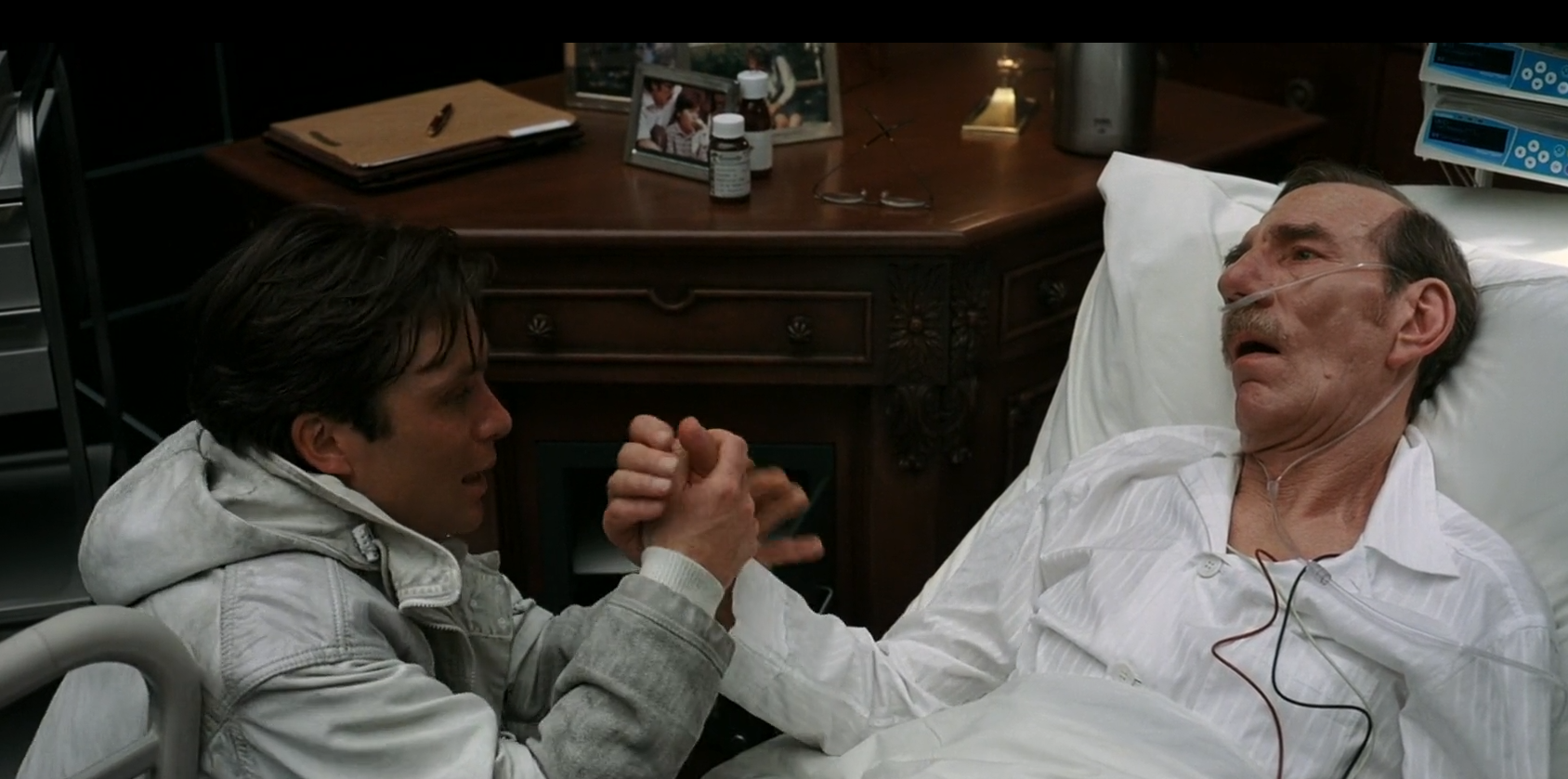
Disclaimer: the text of this post was not generated by any LLM. The idea of writing it came after watching the film many times and reading various related threads on Reddit some time ago. Since I’m not skilled enough in English, I used ChatGPT to correct my grammar and to make the narration smoother. The definitions of psychological terms were taken from appropriate sources. Be cautious when using LLMs to clarify information about the Inception plot, as it may be incorrect. The post doesn’t provide links to other sources, if you’re looking for more information, check out the Inception fandom site or relevant threads on Reddit. Other published articles may offer only a limited view of the film.
Introduction
In this post, I’m gonna dive into one of my all-time favorite Nolan movies, Inception. This mind-bending film is all about futuristic tech that lets people share dreams using a special device. It touches on the idea of how the mind works when we’re dreaming, making it tricky to follow, especially if you’re watching it for the first time. The way the story unfolds is also quite interesting - just when you think you’ve figured something out, you end up with even more questions, some of which the film never answers.
Inception explores a number of psychological themes, such as the conscious and subconscious mind, the nature of dreams, depression, and more. What’s really interesting about the movie, however, is that it doesn’t dive deep into scientific theories to explain how dream sharing works. Instead, it focuses more on logic and belief systems, which gives it this unique vibe. The film doesn’t try to convince you with hard science so much as it tries to make you believe in the rules of its world, even if they don’t quite make sense in the real one.
A quick look at the terminology
Mindespionage - an attack on the target’s mind aimed at stealing information.
Conscious and subconscious - two different degrees of awareness, controlled and uncontrolled.
Lucid dream - a dream with a high degree of awareness.
Projections - images of people within dreams, representing the idea of the sleeping subject’s subconscious of them.
Kick – a sudden physical sensation that causes a dreamer to wake up.
Limbo - a deep layer of subconscious.
Dreamer - a person in whose mind a dream occurs.
Extractor - a person conducting mindespionage operations.
Inception - seeding an idea in the target’s mind.
Shared dream - a dream that is experienced by all connected people.
Dreamscape - a dream layer with all the things created.
Mr. Charles - a trick devised by Cobb to deceive the projections within the target’s mind.
Dreaming device - the PASIV Device or Portable Automated Somnacin IntraVenous Device is used for administering sedative drug to dreamers and share dreams.
Conscious, subconscious and limbo
These three terms are the most important for understanding the film as a whole and dream sharing in particular. Let’s look at them in more detail.
The conscious and subconscious are two distinct levels of awareness that govern human thought, behavior, and perception. The conscious mind is like the spotlight of our awareness - it deals with everything we’re actively thinking about and processing in the moment. It includes thoughts, feelings, perceptions, decisions, and actions that we are fully aware of and in control of.
The conscious mind works alongside the subconscious mind, which manages more automatic processes like breathing, habits, and deep-seated beliefs or memories. While the conscious mind handles the present moment, the subconscious stores vast amounts of data and influences our behavior without us being fully aware. The subconscious mind operates below the level of conscious awareness. It acts like a vast repository for memories, beliefs, and learned behaviors that shape how we respond to the world, often on autopilot.
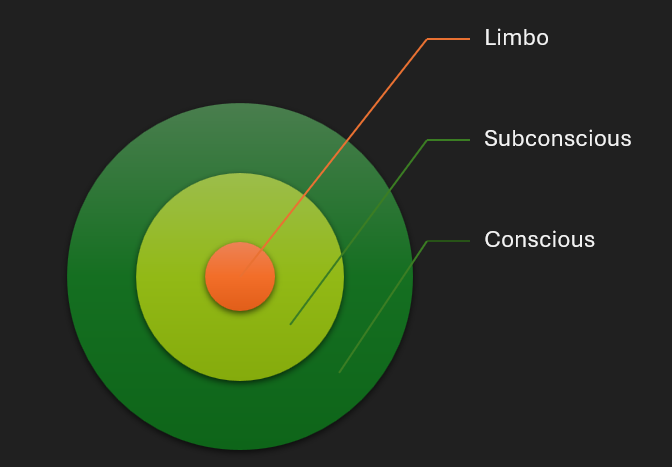
Layers of the human mind
One of the key differences between these two levels is awareness. While the conscious mind involves full awareness of the present and control over one’s thoughts and actions, the subconscious operates below conscious awareness, shaping behavior without deliberate control. Another notable difference is that, at the conscious level, one has direct control over the present and can actively change their thoughts or behavior, whereas, with the subconscious, this is very difficult or even impossible.
In turn, limbo is a space of pure subconscious, where the dreamer is completely detached from reality, often without knowing how they got there. As Arthur explains it «Unconstructed dream space, just raw, infinite subconscious». Limbo is portrayed as a place where time is vastly expanded - what feels like hours or days in real life can be decades or centuries in limbo. This makes it extremely dangerous, as spending too long in limbo can blur the lines between dream and reality.
In the movie, limbo is a key plot element because characters who die in a dream under heavy sedation (or go too many layers deep into dreams) risk falling into limbo.
Dreaming
Dreaming is a mental process that occurs during sleep and it’s a way for the brain to process emotions, memories, and experiences, often weaving them into complex, vivid narratives. Both the conscious and subconscious mind are involved in dreaming, but in different ways. Dreams are largely driven by the subconscious mind. While one is asleep, their conscious awareness is inactive, allowing the subconscious to express itself freely. Since the subconscious stores memories, emotions, and unresolved thoughts, these things may surface in dreams. They often blend together in abstract ways, forming the content of one’s dreams. Also, the subconscious tends to communicate through symbols and imagery. In dreams, it may present hidden fears, desires, or conflicts in metaphorical form, which can make dreams seem surreal or illogical.
During sleep, one’s conscious mind is mostly inactive, but it can play a minor role when their experience lucid dreaming, a state where one is aware that they are dreaming and may even control the dream. Lucid dreaming is described below and presents the key part to understanding the main idea behind the movie. Summarizing the above, dreams are a dynamic interaction between the subconscious and conscious minds. The subconscious is the primary driver, shaping dreams from deep-seated emotions, memories, and symbols, while the conscious mind can sometimes reflect on or control aspects of the dream, particularly in the case of lucid dreaming.
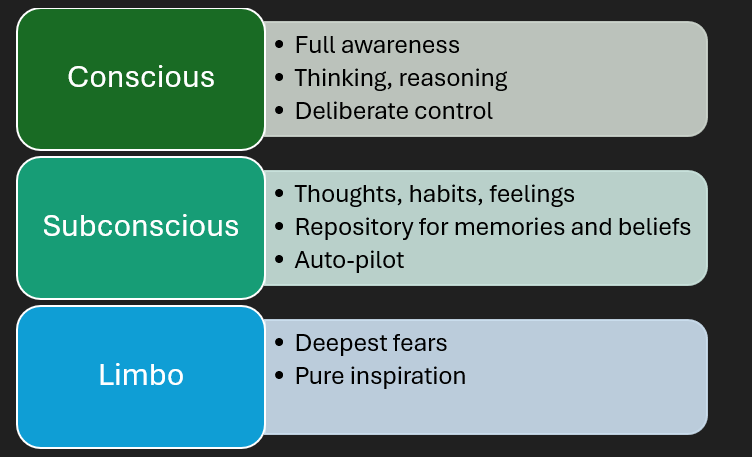
Another essential point about dreaming is that time always flows more slowly in a dream because the brain is believed to work faster, and the deeper the dream, the slower time flows. This concept is crucial to understanding the dream travels depicted in the movie.
Lucid dreaming
Lucid dreaming is a state in which the dreamer becomes aware that they are dreaming while still within the dream. In a lucid dream, we realize that the events happening around us are not real, and we can often take control of the dream’s environment, narrative, or our own actions. Some people are able to train themselves to enter a lucid dream state intentionally, allowing them to manipulate the dream as they please.
The concept of dream travel in Inception is whole based on lucid dreaming. Upon entering a dream by prior concept, the participants are fully aware that they are in a dream. Nevertheless, not always. Extractors like Cobb, connect the target to a shared dream unexpectedly and without their consent, thus disarm their consciousness and allow subconscious to dominate in a fictional reality. Once conscious is turned off, an extractor can proceed with his plan to steal the necessary information.
Lucid dreaming is a hybrid state of consciousness, blending elements of both dreaming (subconscious) and wakefulness (conscious awareness). In some lucid dreams, the dreamer can manipulate the dream’s content. This could involve changing the dream environment, flying, interacting with dream characters, or deciding how the narrative unfolds. This is the main foundation of the film.
Dream sharing
In Inception, dream sharing is a futuristic technology that allows multiple people to enter and share the same dream. Using a special device called the PASIV (Portable Automated Somnacin IntraVenous) machine, participants are connected via IV lines, which administer a sedative and link their minds. This creates a shared dream space where everyone experiences the same environment and events, even though it’s occurring in the mind of a designated “dreamer.” An essential part of this process is the person considered the dreamer, as the dream occurs in their mind.
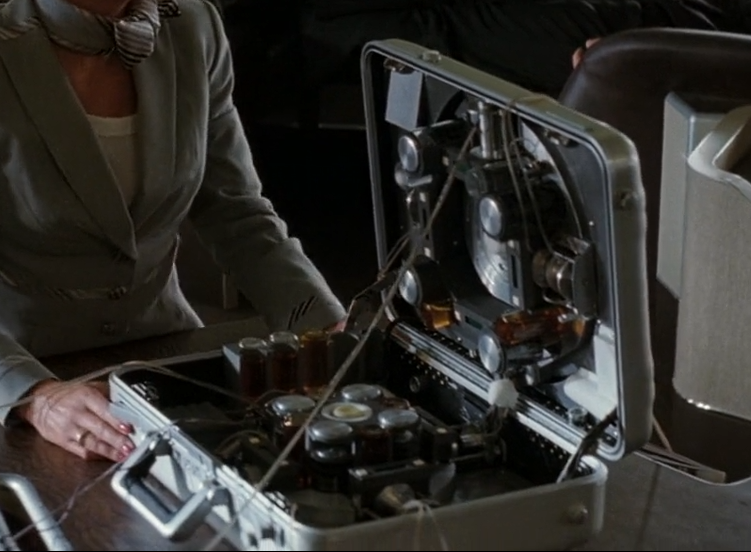
PASIV Device
The dreamscape usually includes a maze that reflects the complexity of the mind, especially the subconscious and the unpredictability of the dream world. The dreamscape is prepared in advance by the architects, which will later be filled in by the extractors’ target with projections that reflect the target’s judgement of these people.
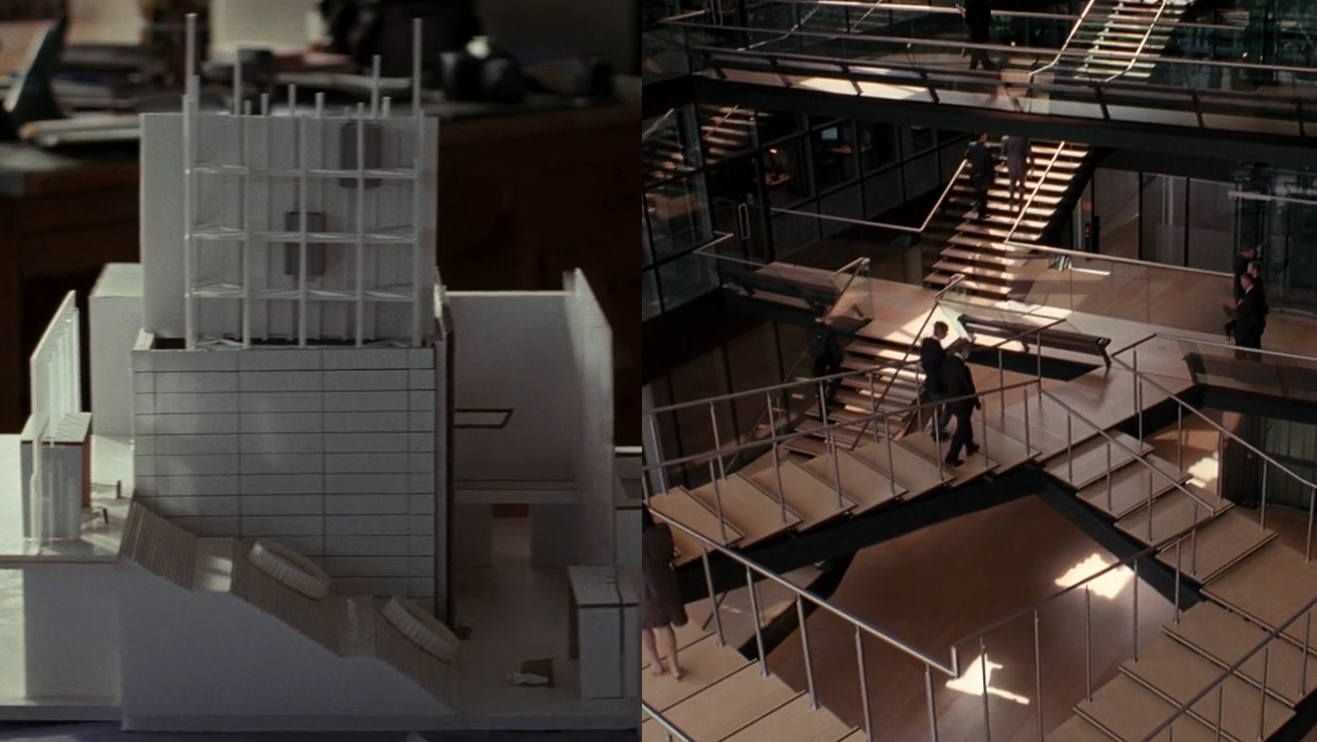
A model of the hotel maze for the second dream level in the inception mission
The maze gives extractors an undisputable advantage in the race for the secrets they need to extract. In a changing dreamscape, it can be used as a constant that extractors can rely on, since only they know its design. For example, they can easily elude armed projections and take the subject of the inception to the right place at a certain time. In other words, the thoughtfulness of the maze is the key to the success of inception.
In the film, dream sharing is primarily used for extraction - a method to steal valuable information by accessing a person’s subconscious while they’re dreaming. The team infiltrates the target’s mind, retrieves secrets, and escapes before the target wakes up.
Layered dream
A layered dream is a tactic used by dreamers to conduct more sophisticated and sensitive operations on the target’s mind. It becomes especially useful when the target’s mind is trained to resist invasions and is aware of the tricks extractors use to steal secrets. At deeper dream levels, extractors have a better chance of bypassing these defenses, which often manifest as armed projections capable of attacking and killing the extractors.
However, the layered dream tactic has its disadvantages, as it requires more preparation and carries a higher risk of failure. The following elements are essential: multiple kicks to wake the dreamers from deeper dream levels, precise synchronization of those kicks, a more advanced sedative, and careful planning of each dreamscape’s details to keep the dreamers asleep. While this sounds effective in theory, in practice, dreamers typically only navigate one or two dream layers. Cobb is considered one of the most skilled extractors of his time, largely due to his experience in navigating a two-layered dream.
Totem
A totem is a small, personalized thing that helps the dreamer differentiate the real world from the fictional one. Even though lucid dreaming pros like Cobb don’t need a totem to differentiate between the two realms, it can be helpful for beginners who are just starting out on this amazing experience. The totem is believed to behave differently in both realities, changing its weight or balance. After Mal’s death, Cobb took her totem in the form of a top. In a dream, the top spins indefinitely and doesn’t fall.
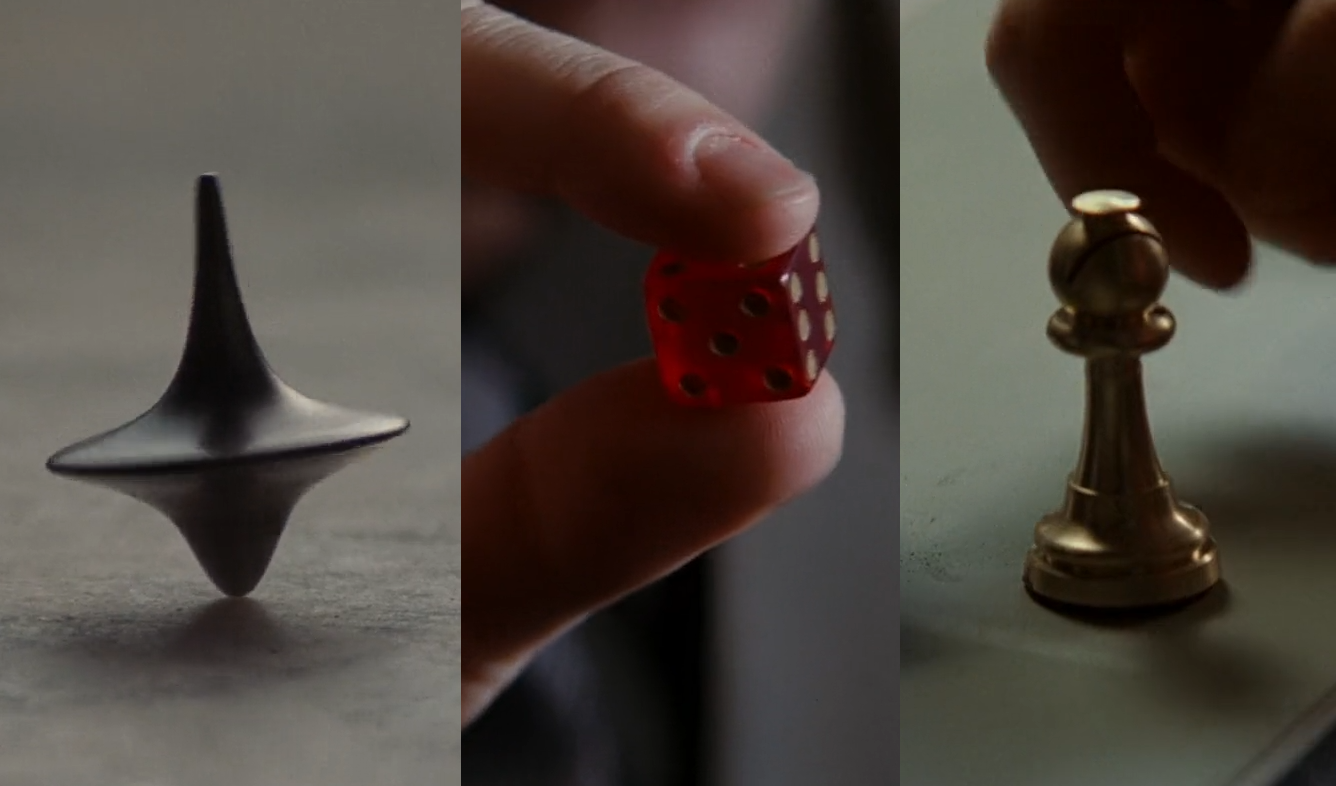
Totems of Cobb, Arthur and Ariadne
Inception
There are various scenarios in which people might engage in shared dreaming. For example, it can be done simply for fun if people want to entertain themselves. However, other scenarios may be less innocent. For mind thieves or extractors like Cobb, shared dreaming is the perfect technology for conducting espionage operations, allowing them to make a lot of money.
In a typical scenario, the extractor targets a victim in a location where it’s possible to connect them to the dreaming device. The victim is put to sleep within a dreamscape that includes a pre-designed, where the extractor has full control. Following a carefully crafted plan, the extractor manipulates the victim into revealing their secrets.
The situation with inception is different and much more complex. It involves implanting an idea in the target’s mind in such a way that they believe the idea is their own. As we learn from the film, inception was considered impossible due to the complexity of the prerequisites required for such an operation and its inherent unpredictability.
The characters
Maurice Fischer – a dying founder and owner of Fischer Morrow, a large energy corporation. He is a competitor of Saito, a Japanese businessman who seeks to dismantle his company.
Robert Fischer – the son of Maurice Fischer and the target of the inception mission. Robert Fischer is expected to become the next owner of his father’s energy empire.
Peter Browning – Robert’s godfather and a high-ranking executive in Fischer Morrow. Browning is a close and trusted advisor to both Maurice and Robert, and he plays a significant role in Robert’s life, especially after Maurice’s death.
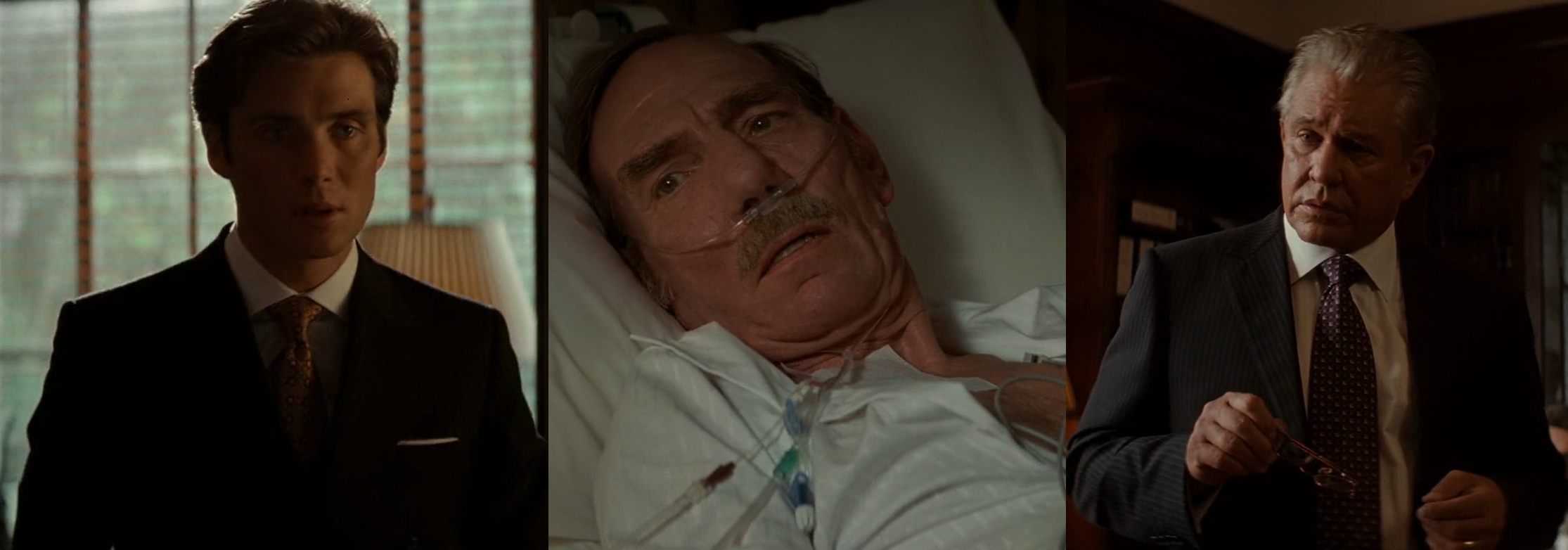
Robert Fischer, Maurice Fischer, Peter Browning
Cobb – a man with unique skills in lucid dreaming and subconscious travel. He is referred to as «extractor», a professional who can extract information from a subject’s mind while they are asleep. Cobb is able to extract even well-hidden information by leveraging the concept of multi-layered dreams.
Mal – Cobb’s wife. We’ll discuss her personality and relationship between them a bit later.
Arthur – a researcher and key member of Cobb’s team. He is responsible for working out the details of the dreamscapes for their missions.
Eames – a skilled forger who can take on the appearance of others within a dream and perfectly imitate their behavior. His unique ability makes the team’s mission easier, as the target can interact with him as though he were a trusted person, without suspecting the deception.
Ariadne - a talented architect hired by Cobb on the recommendation of his father-in-law, Stephen Miles. Ariadne is responsible for designing the complex mazes for the layered dream in which the main part of the movie takes place.
Saito - a Japanese businessman whose company is threatened by the dominance of Fischer Morrow. He hires Cobb to perform inception on Fischer Jr., planting the idea in his mind that he should liquidate the company.
Yusuf - a specialist in developing sedative drugs. He is responsible for creating the sedative used in the three-layered dream where the inception on Fischer takes place.

Cobb (extractor), his wife Mal, Arthur (researcher), Eames (forger), Ariadne (architect), Saito (employer), Yusuf (sedative developer)
Cobb and Mal
Cobb and Mal are married and have two children. Throughout the movie, we learn that Mal is also an experienced dreamer. At one point, Cobb worked for a private employer, the shady company Cobol Engineering, which specialized in industrial mindespionage. This took place before the events shown in the movie.
Over time, as Cobb and Mal became more skilled in lucid dreaming, they learned to explore limbo and started building their own world. As Cobb said, “there’s nothing to compare to this”. Once a dreamer experiences it, they feel the need to return to this experience over and over again. However, the more the pair delved into this fictional reality, the more the line between it and the real world became blurred.
Apparently, Cobb was more resistant to the perception of the fictional reality of limbo, always being aware of the line between limbo and the real world. But a long stay in limbo had a negative impact on Mal, whose mind began to tire of reality and seek solace in the fictional world.
Their longest experience in limbo, for one night, which equals fifty years in limbo, led Cobb and Mal to fatal consequences. At one point, Mal refused to return to reality, since the limboscape gave her complete satisfaction. She even locked her totem away in a vault and forgot about it. In a desperate attempt to save her, Cobb performed inception on Mal, planting the idea that limbo wasn’t the real world and that they needed to return.

Cobb and Mal in limbo
However, Cobb couldn’t have foreseen the consequences of his actions. The idea of a fictional world and the need to escape it took hold of Mal even in the real world. What started as a simple thought grew into a persistent belief that they were still trapped in a false reality, which confused her perception and sense of reality.
Before committing suicide in the hotel, Mal wrote a letter blaming Cobb for her death. It was her final attempt to convince him to follow her to the “real world”. Mal’s death had a devastating impact on Cobb. It ruined not only his personal life but also his career. Cobb couldn’t forgive himself and his guilt settled deep in his subconscious. In each subsequent mission, this guilt escaped from the subconscious and manifested as a projection of Mal in his dreams. Since Cobb couldn’t forgive himself, he couldn’t rid his mind of Mal’s presence.
The film begins with Cobb being wanted by U.S. authorities and looking for a way to return home. He then meets Saito, who promises to return him home in exchange for performing inception on Fischer Jr. But before trusting him with this operation, Saito decides to test Cobb by having him complete a mission, during which Cobb uses a two-layered dream to extract secrets from Saito’s head.
The operation
Alright, we made it! After going through all the necessary information, we can now take a look at the inception plan developed by the team to carry out on Fischer Jr. To perform the inception, three dream layers were designed. The mazes in each layer were constructed by Ariadne and Eames. The first level was a city, the second a hotel, and the third a snow fortress. Each level had a designated dreamer: Yusuf for the first, Arthur for the second, and Eames for the third.
The plan wasn’t focused on manipulating corporate deals in the energy market. Instead, the emphasis was placed on the relationship between son and father. The ultimate goal was to make Fischer Jr. want to split up his father’s energy empire. Based on Cobb’s understanding, positive emotions are stronger than negative ones, so the idea was to make Fischer believe that his father’s desire to divide the company stemmed from good intensions.
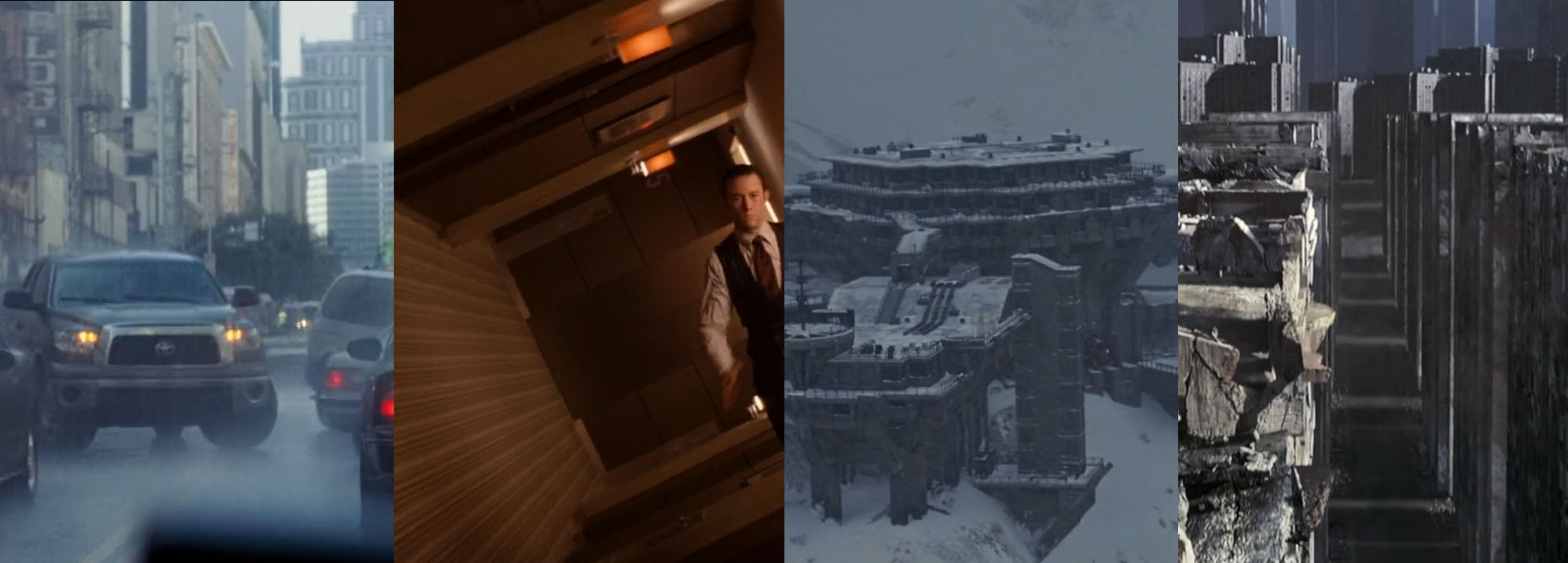
Three dream layers (city, hotel and snow fortress) and limbo
To accomplish the task of turning Fischer’s emotions toward his father, the team decided to use Fischer’s uncle, Browning. The goal was to convince Fischer that his uncle wasn’t his ally and was actually trying to take control of the company. Browning would serve as a vehicle for the idea that Fischer’s father truly loved his son.
The first layer of the dream is set in a city, where an unknown gang kidnaps Fischer and his uncle, taking them to a designated location. Eames plays the role of Browning. In the second dream layer, Fischer is led to believe that Browning orchestrated his kidnapping. To uncover Browning’s motives and plans, Cobb, who plays the head of Fischer’s security team, convinces Fischer to enter Browning’s mind. This leads them to the third dream layer, set in a snow fortress.
Let’s take a closer look at these dream layers. Upon entering the first level, the team encountered major difficulties that complicated their mission. It turned out that Fischer’s subconscious was protected against intrusion and after his kidnapping, armed projections attacked the team, seriously injuring Saito. As the researcher, Arthur was responsible for discovering this information during mission preparation, but he missed it. The armed projections would continue to pursue the team through each subsequent dream level.
The goal of the first dream level was to bring Fischer and Browning, as impersonated by Eames, to a specific location where Browning could begin influencing Fischer’s subconscious. With the team being chased by armed projections and under constant enemy fire, they decided to enter the second dream level from the van driven by Yusuf. This decision added further complications for the kicks, leading to a lack of gravity before the second kick when the van would be in free fall. According to the revised plan, the first kick would occur when the van hits the bridge’s guardrail, following the playing of music as a signal.
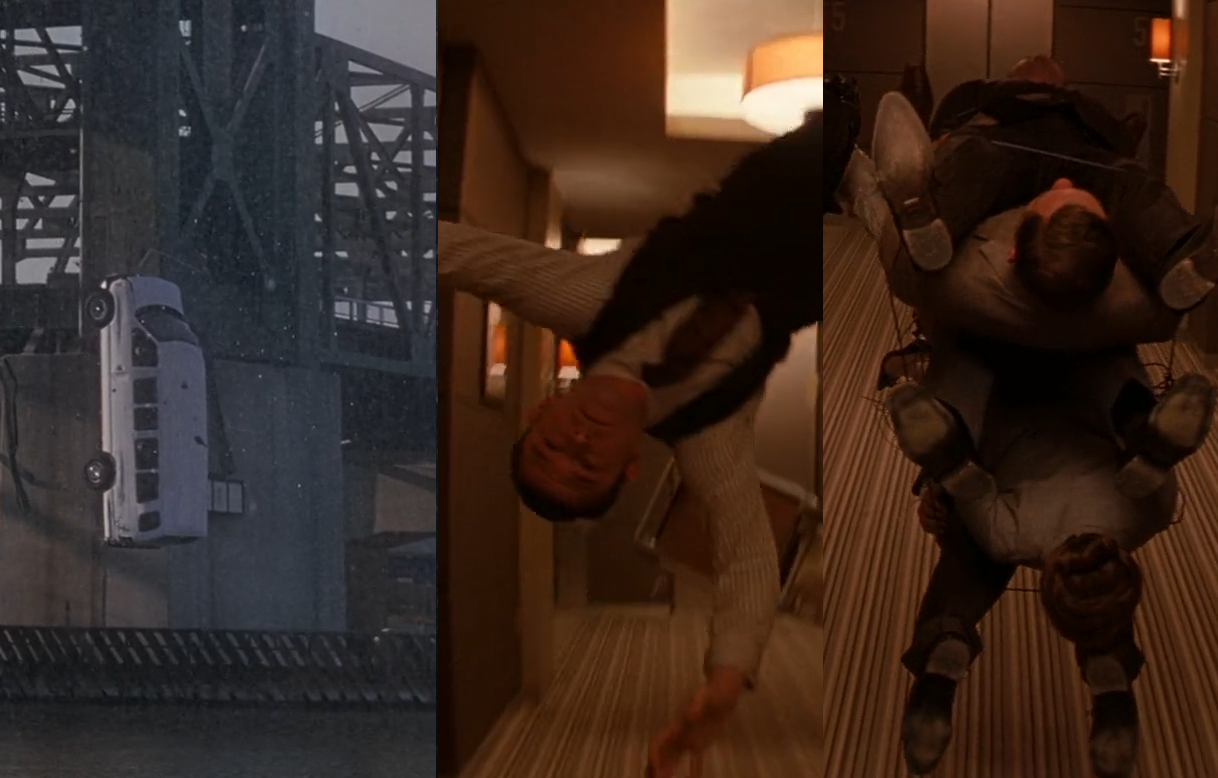
While the team is on the second dream level, the van falls off the bridge, creating zero-gravity conditions in the hotel
Next, we move to the second dream level, set in a hotel, where Cobb meets Fischer at the bar. To deceive the armed projections and convince Fischer that Cobb is an ally, Cobb uses a tactic called Mr. Charles. This allows him to turn Fischer against his own subconscious by revealing that he is actually dreaming. Cobb introduces himself as the head of Fischer’s security, assigned to protect his mind from intrusion while he sleeps. He explains that someone is trying to invade Fischer’s subconscious and that the armed projections are his enemies. This trick works, and Fischer starts thinking the way Cobb intends.
With Eames impersonating Browning, Cobb convinces Fischer that his uncle is behind the kidnapping and is trying to steal the code to unlock his father’s vault and access secret information about Fischer Morrow. To uncover Browning’s true intentions, Fischer agrees to enter Browning’s mind, which is actually a way into Eames’ mind, where the dreamscape has already been prepared to perform inception on Fischer himself.

The third dream level takes place in a snow fortress with a hospital room inside. This room is located in a bunker within the fortress where Fischer’s father is. While the armed projections from Fischer’s subconscious try to protect him by fighting against Cobb and his team, Fischer thinks that they are his enemies, aimed at protecting Browning’s subconscious. Skipping over Fischer and Saito’s death and their subsequent fall into limbo, we move to the moment, when Fischer opens the bunker with his father inside. By this point, Cobb’s tricks have influenced Fischer’s subconscious enough, and led by the false narrative, Fischer projects his father in the way Cobb intended. When Fischer Jr. opens the vault next to his father’s bed, he finds a childhood toy and hears the words from his father that his subconscious had always longed to hear.

Fischer Jr. opens the vault and takes out his childhood toy. This moment marks the completion of inception. This installation, including the vault and the toy, was created by Ariadne and Eames
It’s important to note that the dream architects only design each dreamscape, but all the people inside are projections of Fischer’s subconscious. For example, when Fischer enters the bunker with the hospital room, his subconscious automatically places the projection of his father there.
Falling into limbo
Now we’re gonna discuss one of the trickiest moments in the movie, which takes place in the third dream level. The mission there was limited in time and at one moment, Cobb insisted that Ariadne and Eames reveal a loophole in the fortress maze to help Fischer get there faster. The maze design was kept secret from Cobb at his request, as he was afraid that Mal could use this information and ruin the mission. And that’s exactly what happened. Once Fischer enters the fortress, Cobb’s projection of Mal appears through the loophole and shoots him.
When Cobb and Ariadne get into the fortress, Fischer dies, and the same fate befalls Saito, who was gravely injured on the first dream level. Normally, when a participant dies in a dream, they simply wake up. But this time, things were different. The sedative developed by Yusuf was extremely strong, as it needed to keep the team in a three-layered dream. The only way to wake up was through a synchronized kick, triggered simultaneously across all three levels. If someone dies under these conditions, they don’t wake up - they fall into limbo, a shared dreamscape of pure subconscious, where only Cobb and Mal had ever been before.

Mal shoots Fischer
To get Fischer back, Ariadne and Cobb decide to delve into limbo. Eames connects them to the PASIV device and prepares to use an electrical shock on Fischer to bring him back. When Ariadne and Cobb enter limbo, they find the collapsing dreamscape that Cobb and Mal created. During the 50 years they spent there, the couple managed to build an entire city with countless buildings. As Cobb predicted, Mal took Fischer as a hostage, hoping to trade him. In her mind, Fischer could be freed, and Cobb would stay with her projection in limbo.
Cobb agrees to Mal’s terms, and Ariadne brings Fischer back to the third level by pushing him from the window of a skyscraper. Meantime, Cobb confronts the projection of Mal, admitting that he was the cause of her obsession due to the inception he performed on her. Mal then attacks Cobb, but Ariadne shoots her, freeing Cobb from his trauma. Instead of joining Ariadne in her jump from the skyscraper, Cobb chooses to stay in limbo to find Saito.
It’s unclear how Cobb finds Saito in limbo. All we see is Saito’s projections discovering a haggard Cobb on the beach near Saito’s mansion. They bring him inside where Cobb reminds Saito of their deal and the need to return to reality. Cobb holds a gun, implying that to escape limbo, they would have to commit suicide.
FAQ
Why did Saito age in limbo, but Cobb and Mal didn’t?
Saito aged rapidly in limbo likely due to his lack of lucid dreaming skills. He couldn’t control his experience in the fictional reality and eventually lost his sense of self. When Cobb meets Saito in limbo and sees him as a very old man, that appearance is a projection of how Saito perceives himself. In contrast, Cobb and Mal, being experienced dreamers, were able to maintain their self-image, and their long stay in limbo didn’t affect their perception of their physical appearance. Another factor is that Cobb and Mal entered limbo intentionally, while Saito ended up there wounded and unconscious. In other words, Saito wasn’t prepared for this challenge, didn’t know what limbo was and how to handle it.
Why didn’t the absence of gravity affect the third dream level?
Since the team missed the first kick when the van hit the bridge, their next opportunity was when the van hit the water. However, during this period, the van was in free fall, which caused a zero-gravity effect on the second dream level, forcing Arthur to improvise. Instead of blowing up the ceiling as planned, he placed the team members in an elevator and detonated the elevator cables.
It’s believed that the zero-gravity state didn’t affect the third level of the dream because, at that depth, the human mind is so deeply immersed in the dream that external factors can’t influence it. This contrasts with the first two dream levels, which are more susceptible to external disruptions.
Did Saito and Cobb manage to escape limbo?
Nolan intentionally left this question open to interpretation. I tend to believe they succeeded in escaping and Cobb finally reunites with his children.
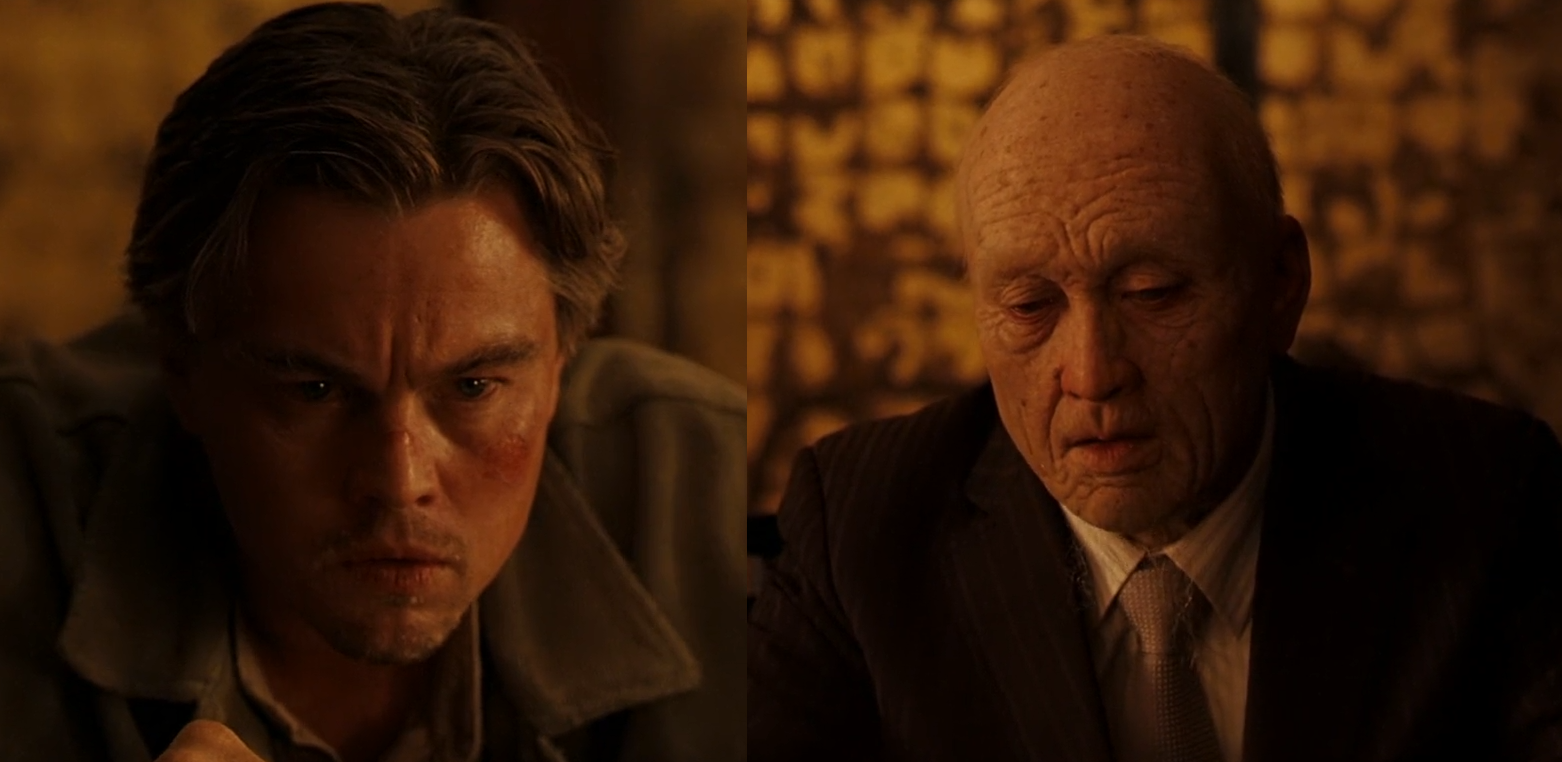
Cobb and Saito in limbo
What does the train mean on the first dream level?
Ariadne believed that the train was a projection of Cobb’s troubled psyche. His unresolved trauma after Mal’s death manifests in every dream, often threatening to ruin his missions. The sudden appearance of the train represents Cobb’s inability to fully control his subconscious, as his guilt over Mal constantly disrupts the dream world.
Why did Arthur blow up the elevator in the hotel?
It was necessary to create a kick in the zero-gravity state caused by the van’s fall. Arthur planted explosives on the elevator cables so that the explosion would push the elevator upwards. This sudden motion caused the team members inside to hit the elevator floor, simulating the required kick to wake them from the second dream level.
Can Cobb dream like regular people while sleeping?
No, Cobb lost the ability to dream naturally and can only do so using a special device.

Why did Mal kill Fischer and take him as a hostage in limbo?
Mal is a projection of Cobb’s trauma, emerging from his subconscious without his control. This projection mirrors the behavior of the real Mal before her suicide, as preserved in Cobb’s memory. Mal’s goal is to bring Cobb back to what she believes is the “real” world. To accomplish this, she disrupts Cobb’s real life. That’s why she killed Fischer and waited for Cobb in limbo, intending to exchange Fischer for him.
Why didn’t Mal appear in the first and second dream layers?
Mal only appeared after Ariadne revealed the plan for the snow fortress maze to Cobb. During the construction of the maze, the plan was deliberately kept secret from Cobb to protect the operation from Mal, who was a projection of his subconscious and could sabotage the mission.
What is the meaning of the scene with objects blowing up when Ariadne and Cobb are sitting together in a dream in Paris?
That scene occurs after Cobb reveals to Ariadne that they are in a dream, and this is how Ariadne’s subconscious reacts to this information. Cobb explains to her that when the dreamer becomes aware they’re in a dream, the subconscious can react defensively, manifesting as disruptions. The explosions and the objects blowing up represent Ariadne’s subconscious rebelling against the sudden awareness that the world around them isn’t real.
What are the numbers 5 2 8 4 9 1?
One of the key elements of the inception plan is the vault near Fischer’s father’s hospital bed. Inside this safe, the testament is stored. According to the developed plan, Robert Fischer is meant to open it at the final moment in the third dream level, after the projection of his father points it out. In this dream, Ariadne places Fischer Jr.’s childhood toy inside the safe. It is assumed that this toy would evoke positive emotions towards his father.
Fischer would use those numbers to open the safe. The numbers are actually not real, and he doesn’t know them in reality. Since the plan implied that Fischer should know them and use them to open the safe, the team came up with the idea to plant them into his mind beforehand. During the kidnapping scene in the first dream level, Cobb prompts Fischer to say random numbers from his mind. On the second dream level, those numbers appear on a piece of paper left by the Eames’ projection on the bar counter near Fischer. So, when Fischer approaches the vault in the fortress, the numbers automatically appear in his head.
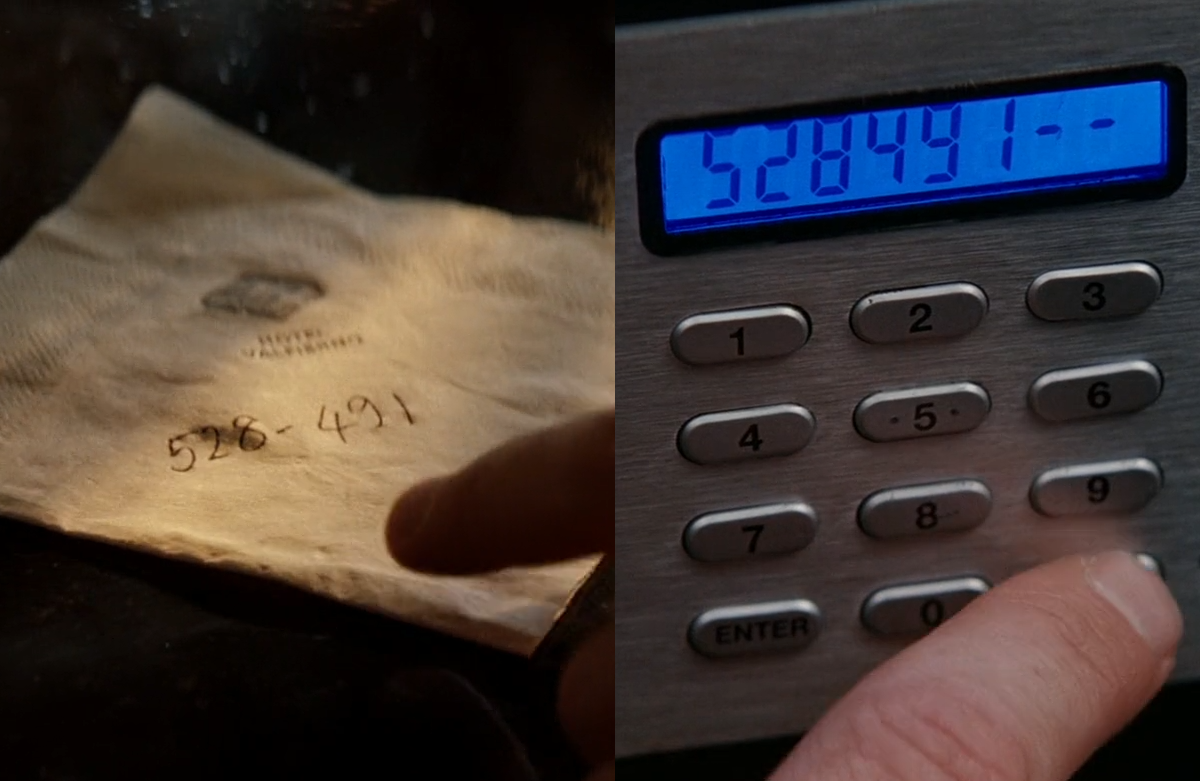
The numbers as they appeared on the second and third dream levels
Why is a simple one-layered dream not enough for inception?
The main problem with inception is that the human mind can easily recognize when an idea comes from someone else. As Arthur explained in the film, if somebody tells you not to think about something, you will immediately think about it. This is how the mind works - it can distinguish a foreign idea from its own.
A multi-layered dream allows an extractor to plant an idea in the target’s mind in such a way that they will believe it’s their own. This achieves by blurring the mental boundaries that the mind uses to filter information. By immersing the target in a multi-layered dream, an extractor leads them through experiences that eventually plant an idea, rather than directly telling them “you should think about this”.
Why can’t people recognize that they are in a shared dream?
Because a dream doesn’t have a clear starting or ending point. When someone enters a dream, they find themselves in the middle of a situation, already “aware” of what’s happening even though it can’t be possible in reality, where events are logically connected. In dreams, we don’t remember how we got there due to deactivation of our conscious mind. As a result, our mind can’t recognize how we entered the dream, making it difficult to realize that it’s not reality.